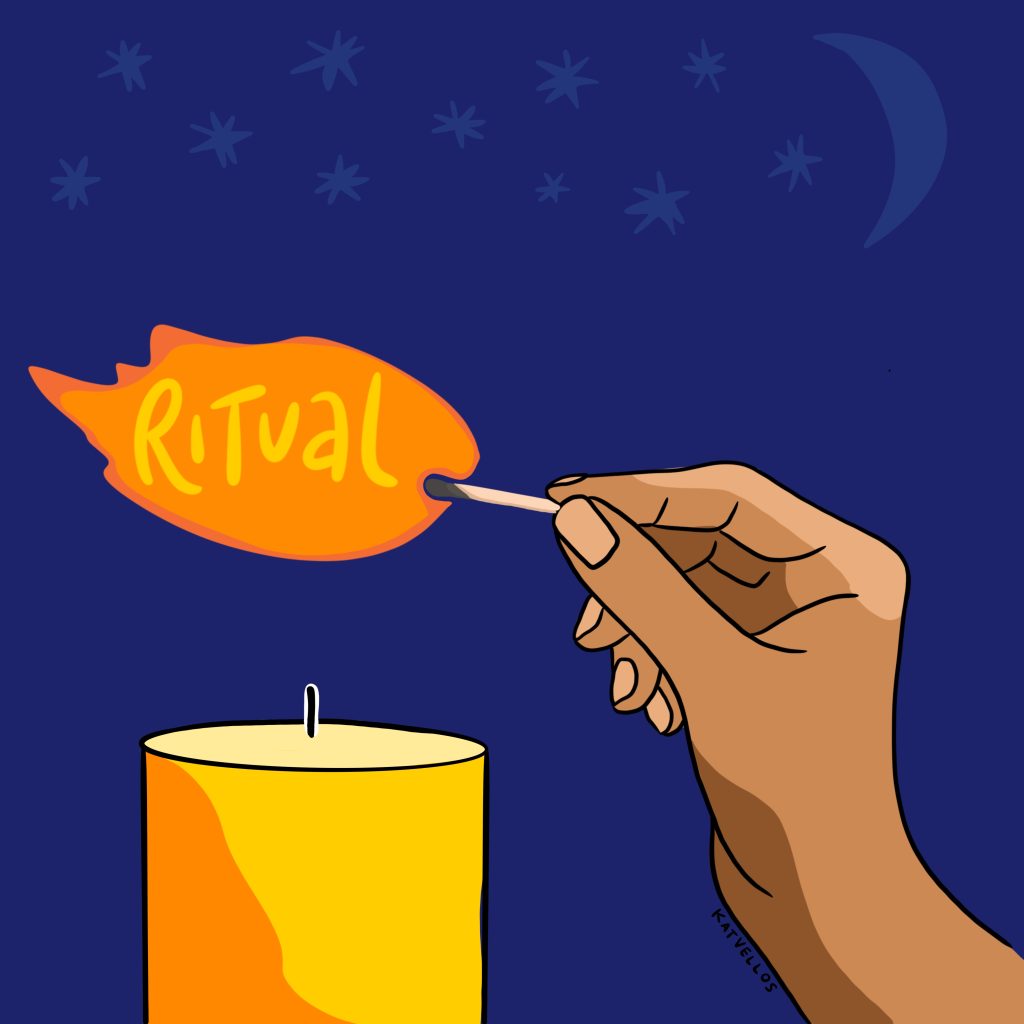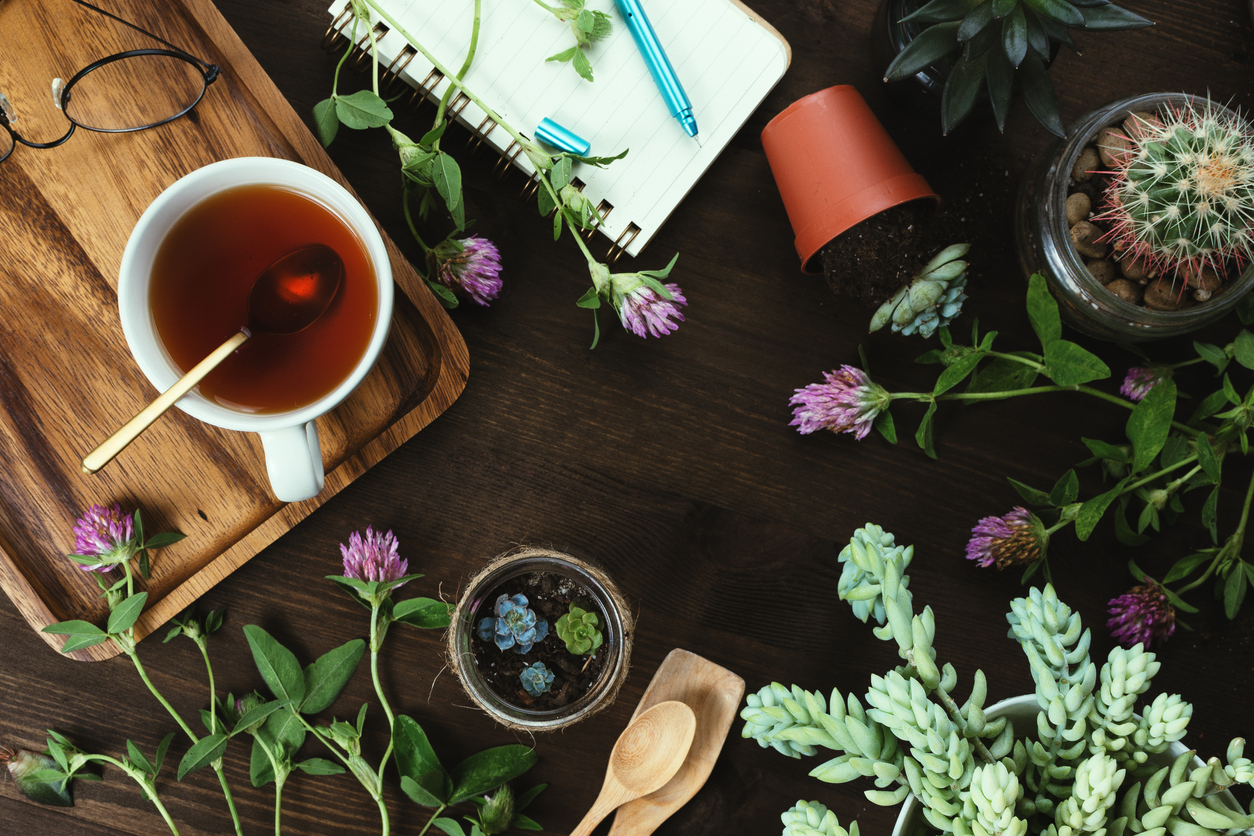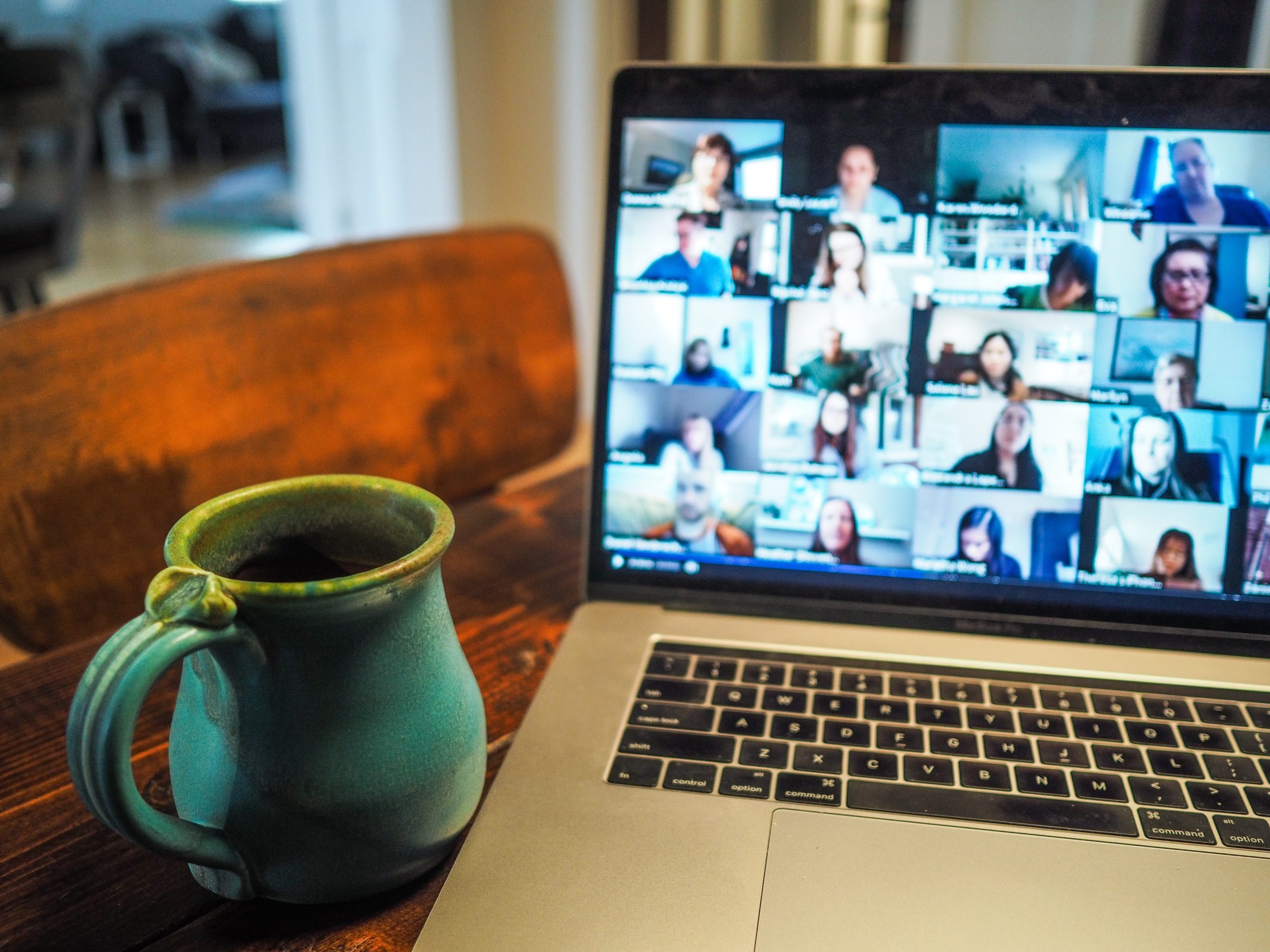It wasn’t always like this. When you first got together with your partner, things were good –– so good, in fact, that you couldn’t imagine things being any other way. Cut to a couple years later, and you’re having pointless fights over which way the knives go in the cutlery drawer … or you’ve settled into a rhythm that’s a bit more “roommate” than “hot date”.
But what if there was a way to continually respark long-term relationships so that they stayed vital over time, no matter how long you’ve been together?
Turns out, there is. And it all comes down to tiny rituals.
The power of ritual.
Our brains love rituals. They’re natural anxiety busters, they alleviate grief and fear, and they create conduits for connection with yourself, with source, and with other people. Plus they follow the same pattern that ingrains habits in our brains: trigger, action, reward.
You follow the trigger to start the ritual — light a candle before you meditate, take three deep breaths to ground yourself before you start a call, etc — then do the action, or in this case, the ritual. Afterwards, you get the reward, which is greater calm or a sense of accomplishment, and that coincides with a big hit of dopamine that comes from completing the cycle. This makes you feel good, which makes you of course want to repeat the cycle.
How rituals can help overcome the one fundamental problem of any long-term relationship
You can use this same basic model to create rituals that help you overcome the main problem in any long-term relationship: the tension between desire and familiarity.
Dr. Esther Perel studies desire and relationships, and she’s found that we’re all struggling to reconcile two fundamental human needs. From her TED talk:
“On the one hand, [we have] our need for security, for predictability, for safety, for dependability, for reliability, for permanence. All these anchoring, grounding experiences of our lives that we call home. But we also have an equally strong need — men and women –– for adventure, for novelty, for mystery, for risk, for danger, for the unknown, for the unexpected, surprise –– you get the gist. For journey, for travel.”
Fall too far on either end of that spectrum, and you’ll end up either having a wildly passionate relationship that burns out fast, or one where you kinda feel more like roommates than partners.
Rituals provide both stability and novelty: the format is stable, but the way you play it out can be different every time. This gives you space to create the three things that make any relationship strong — safety, mutual vulnerability, and a shared purpose — while still adding in enough novelty to keep things interesting.
Plus, making something into a ritual automates it just enough that you’ll still keep doing it when your motivation is a bit lower. This is key for carrying your relationship through the not-so-fantastic times, when the last thing you want to do is add in yet another thing to your to do list.

Art by kat Vellos
How to get the spark back in a relationship: 5 science-backed relationship rituals
Ritual 1: Greetings and partings
Remember the architecture of rituals: “trigger, action, reward”? Every time you greet or part from your partner is a perfect trigger for a ritual. Figure out just one small thing you can do every time you see your loved one, and do it every time.
It doesn’t have to be complicated. A simple gesture works great, when you add a little heart.
From therapists Brent Bradley and James Furrow:
“These repeated gestures of importance can be as simple as a hug, kiss or special word or phrase used when saying hello or good-bye.”
This particular ritual can also be a great space for play. If the traditional hug or kiss on the cheek isn’t doing it for you, see if you can come up with an inside joke or special handshake to use each time. Might sound a little silly, but it’s these small gestures of intimacy that feed your relationship’s soul.
As Susan Piver says in The Four Noble Truths of Love,
“… the energetic structure you create to house your love can be built bit by bit, courtesy by courtesy, kiss by kiss.”
You could even get your love languages in on the game. (Remember, those are the ways in which you give and receive love. Not sure what yours is? Find out here.) If you love to receive physical touch and your partner’s all about the quality time, mix that up into a daily ritual where they give you a kiss when they get in, and then you listen to them talk about their day for 15 minutes.
And if you want to really double down on the greeting/parting ritual, share a six-second kiss each time. Why six seconds? According to relationship researchers (and GLP podcast guests!) John and Julie Gottman,
“A six-second kiss is a kiss with potential … it’s long enough to feel romantic.”
It also releases a hurricane of feel-good chemicals in your brain, including oxytocin (related to bonding and connection), dopamine (feels super good, and activates the same areas of your brain as cocaine), and epinephrine and norepinephrine (these pique your interest and give you that butterflies-in-the-stomach feeling). Plus it reduces your levels of cortisol, which makes you feel stressed, distracted, and unhappy. How’s that for a reward to round out that ritual cycle!
Ritual 2: Capitalization
One thing relationship therapists talk about a lot is looking for opportunities to capitalize, which just means looking for little good things that you can pay attention to and turn into big good things. (Think of it like deliberately turning up the volume on your excitement at your partner’s good news.)
From Shelly Gable and Harry Reis:
“Scholars have built a program of research demonstrating the power of delighting in good news together. In particular, communicating with our partner about personal positive events — that is, engaging in capitalization attempts — is linked to positive emotions and mental health, beyond any effect of the events themselves. Such capitalization attempts are also linked to greater feelings of trust, intimacy, and satisfaction in the relationship.”
“Relationship benefits associated with capitalization processes include satisfaction, intimacy, commitment, trust, liking, closeness, and stability.”
Turn capitalization into a ritual by tying it into an external event. For instance, you could have your partner tell you about the best part of your day every night over dinner, or just before you go to bed. When they do, capitalize.
Ritual 3: Daily gratitude
Gratitude is the ultimate power up for a relationship: it makes good times even better, and it helps you through the bad times. It’s one of those beautiful little self-perpetuating cycles, where the more you express gratitude, the more it’s returned to you.
From the Journal of Personality and Social Psychology:
“People who feel more appreciated by their romantic partners report being more appreciative of their partners. In turn, people who are more appreciative of their partners report being more responsive to their partners’ needs, and are more committed and more likely to remain in their relationships over time.”
What’s more, it’s still effective even when things aren’t so great. From researcher Allen Barton:
“Even if a couple is experiencing distress and difficulty in other areas, gratitude in the relationship can help promote positive marital outcomes.”
Try to make gratitude a part of your daily interaction with your partner. You can tie it to something small — for instance, you could give them a heartfelt thank you for making coffee for you in the morning — or you can make a list of bigger picture things you’re grateful for, like characteristics you particularly love about them, and let them know in your weekly check-ins –– our fourth recommended ritual.
Ritual 4: Weekly check-ins
here’s nothing sadder than waking up one morning and realizing that you’re not really sure who the person you spend your days with really is. People grow and change over time, which is normal, but you’ve got to grow and change together as a couple too, or else fall prey to “we just grew apart” syndrome.
From psychotherapist Marcia Berger:
“The art of [long relationships] is really the art of keeping up to date with your partner, of staying on track with your own and each other’s life goals as they emerge, exist, and change. It is about supporting each other and staying connected emotionally, intellectually, physically, and spiritually.”
That’s a lot to try to squeeze into a busy day … so don’t try. Instead, set aside a sacred time each week to sit down and check in with your partner. Even if it’s just for 20 minutes, turn off your screens, set everything else aside, tell anyone else in your house that you’re going into “do not disturb” mode for a bit, and sit and be with each other.
This is a great time to talk, to check in with the logistics of what’s going on in the other person’s life, but also to rediscover who they are, and who they’re becoming. Think of the intense curiosity you felt about them when you first realized that you were falling for them, and see if you can tap back into that sense of a deep desire to know everything about them. Again, it’s simple, and it’s short, but it’s a powerful way to consistently reconnect.
Ritual 5: Yearly check-in + planning session
This is the bigger, longer version of your weekly check-ins. At the end of each year, set aside time to come together as a couple and look back on the year. Then, revisit your values, goals, and dreams, and see what’s going on with your partner and yourself. How have things changed in the past year? What’s on your mind for moving forward?
Coming together to check in, reflect, and plan in this way is a great way to stay connected with your partner, and it has some seriously powerful effects on your relationship too, especially if things haven’t been super great lately.
From the Journal of Consulting and Clinical Psychology:
“Couples who performed the [annual] checkup saw significant improvements in their relationship satisfaction, intimacy and feelings of acceptance by their partner, as well as a decrease in depressive symptoms, compared with the couples in the control group who didn’t perform a checkup. In addition, the couples who had the most problems in their marriage before the checkup saw the most improvement.”
Your yearly check-ins are also a great time to celebrate the endings in your relationship. This might sound counterintuitive –– after all, aren’t we trying to keep this relationship going? But endings are a part of that, there’s nothing wrong with moving through that cycle, in fact, it’s a far better alternative than the relationship-killing stagnation. Similarly, getting attached the to way things were, or some mirage of stability, is a recipe for frustration and sadness.
Susan Piver talks about this in her GLP podcast interview, as well as in her book, saying,
“Relationships never stabilize … they are constantly in flux because relationships are alive. Expecting relationships to be stable is what makes them unstable … when that expectation [of stability] is softened, an enormous space opens up. Meeting the instability together is love.”
Let’s recap:
Relationships are the single biggest factor in keeping you healthy and happy over time. The caveat is, they have to be good, healthy, fulfilling connections. All relationships go through periods of growth and disintegration, but you can keep them vital over time by building in mini-rituals like these:
— Greetings and partings: make every hello and goodbye a mini ritual.
–– Capitalization: look for chances to get excited about your partner’s good news.
–– Daily gratitude: gratitude is the ultimate power up for your relationship, build it into your days.
–– Weekly check-ins: the best way to avoid “we just grew apart” syndrome. Make the time sacred.
–– Yearly check-ins: a chance to go deep into where things are now, where you both hope to go in the future, and what endings you can celebrate together.
Next steps: choose one ritual that you’re going to incorporate into your relationship, and decide on a trigger for it now. (Seriously. It can be super simple. Don’t overthink it.) Got your trigger in mind? Now act on it sometime within the next week.




